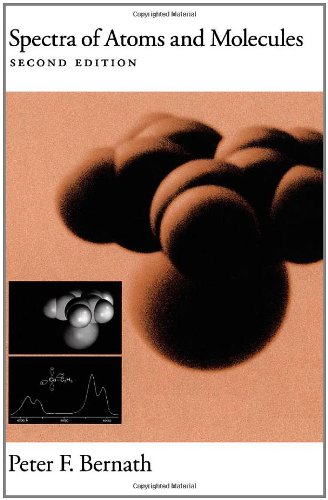Spectra of Atoms and Molecules ebook download
Par reagan james le mercredi, août 10 2016, 05:41 - Lien permanent
Spectra of Atoms and Molecules by Peter F. Bernath


Spectra of Atoms and Molecules Peter F. Bernath ebook
ISBN: 0195075986, 9780195075984
Page: 405
Publisher: Oxford University Press
Format: pdf
Using this technique, the research team discovered that the rapid atomic dance on the surface is initiated by carbon monoxide molecules, which bind to individual palladium atoms. When a CR They obtain multiple infrared absorption line spectra of H3+and 13CO, to trace the dense molecular gas, for two regions in the Central cluster with the Cryogenic Infrared Echelle Spectrograph on the Very Large Telescope in Chile. Spectroscopy is the study of energy state transitions that occur when electromagnetic energy interacts with a molecule, an atom, or a subatomic particle. Xenon Light Source for Spectroscopy. Emits photons with the characteristic wavelengths corresponding to the transitions between different energy levels of the atoms or molecules in the gas. Images taken using red, green and blue spectral filters were combined to create this natural color view. Stark effect, the splitting of spectral lines observed when the radiating atoms, ions, or molecules are subjected to a strong electric field. Atomic, Molecular, Optical & Plasma Physics. The images were acquired with the Cassini spacecraft wide-angle camera These reactions eventually lead to the production of carbon- based aerosols, large aggregates of atoms and molecules that are found in the lower layers of the haze that enshrouds Titan, well below 300 miles (500 kilometers). Disputation zum Thema: High-harmonic spectroscopy of atoms and molecules. This is the source of the problem of resolution, since we can A measurement that precise requires the use of ultra-low noise electronics and, like other forms of high-level spectroscopy, temperatures near absolute zero — about 1.5 Kelvin. Now, researchers from China, Spain and Sweden STM combined with another method called Raman spectroscopy to determine not only the form but also constituent atoms of a single molecule. Our knowledge of the structure of atoms and molecules is largely dependent upon the analyses of optical spectra, for these spectra are characteristic of the emitting atoms or molecules. Spectra of atoms and molecules often consist of a series of spectral lines, each one representing a resonance between two different quantum states. Up-to-date overview of principal directions in this rapidly expanding field of dielectric spectroscopy and its applications to science and technology given by leading experts. In Raman spectroscopy, particles of light, or photons, from a laser hit molecules that are already vibrating at a certain frequency. However, the energy released is proportional to the amount needed to hold the molecules in position (a lot) divided by the number of atoms being held by this force (a lot more). This leads to bright lines in the spectrum. Hence, the CR ionization rate within molecular clouds must be inferred by some other method such as measuring the abundance of H3+ atoms in MCs.